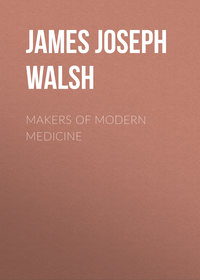 полная версия
полная версияПолная версия
Education: How Old The New
Professor Bourne of Yale, in his chapter on the "Transmission of the European Culture," in the third volume of the American Nation Series,11 says (p. 17): "Early in the eighteenth century the Lima University [Lima, Peru] counted nearly 2,000 students and numbered about one hundred and eighty doctors [in its faculty] in theology, civil and canon law, medicine and the arts. Ulloa reports that 'the university makes a stately appearance from without, and its inside is decorated with suitable ornaments.' There were chairs of all the sciences, and 'some of the professors have, notwithstanding the vast distance, gained the applause of the literati of Europe.' The coming of the Jesuits contributed much to the real educational work in America. They established colleges, one of which, the little Jesuit College at Juli, on Lake Titicaca, became a seat of genuine learning."
A distinguished professor of medicine in this country to whose attention this state of medical education in the Spanish-American countries, so different from what is thought, was called, said: "What a surprise it is to find that while we have been accustomed to think that the primum mobile [the active initiative] in education in this country came from the Anglo-Saxons, we now find that they were long anticipated in every department of education by the Spaniards, though we have been rather accustomed to despise them for their backwardness." With regard to the establishment of the first American medical school, it is no longer a surprise to find that it was established in Mexico, just as soon as we realize that the Mexican University was closely in touch with the traditions of the mediaeval universities generally and these all established medical schools as university departments. The standards of these mediaeval medical schools were transported to America and maintained. Our medical schools in the United States got away from the universities, became mere preparatory institutions, granted degrees for just as little study as possible, two terms of four months each in most cases, sometimes given in the same calendar year and requiring no preliminary training. We are reforming this now for a generation, but just inasmuch as we are, far from advancing, we are going straight back to the mediaeval universities and their standards and methods.
With all this evidence before us it seems perfectly clear that these old mediaeval universities must be considered to have been scientific universities in our fullest modern sense of the term. They devoted all their time to the study of phenomena around them and the attempt to find the principles underlying them. They went at it somewhat differently in many departments of science than those which are now employed, but in all their practical work at least, they anticipated our methods as well as many of our results. The great professors wrote text-books and students who were ardent in the pursuit of knowledge copied out those text-books by hand. They had no way of easily multiplying them almost indefinitely, as we have at the present time. Probably nothing shows so well the enthusiastic zeal of these times in the pursuit of scientific knowledge as the fact that so many copies of these textbooks still remain for us. Much has been lost by war and fire, and still more by wanton destruction by people who could not understand, for there were many intervening generations that sold these old manuscripts by the ton for the use of grocers to wrap up butter and any other commodity. If we only had the wealth of manuscript that was originally created it would be easy to fill in the gaps in our knowledge, and show the wonderful scientific scholarship of these mediaeval universities.
As it is, there cannot be the slightest doubt that these were great scientific universities. How, then, has the opposite tradition of science only coming to cultivation in our time obtained a foothold; above all, how has it happened that men have insisted that there was no science in these old days because the Church was opposed to science and would not permit its study or allow of scientific investigation? If we were to believe many writers who have been taken very seriously, anatomy was conducted only under the pain of death, chemistry made one liable to all sorts of penalties and other forms of science were absolutely banned. There is no reason at all for any such declarations from what we know of the history of science. The place where such groundless assertions are found is in the so-called history of religion. The odium theologicum was very bitter, and ignorant men said things without knowing, and then their statements were copied by others who knew even less.
Probably there is no more serious blot on the history of education and, above all, the history of science, than the fact that men supposed to be scholarly have been so ready to accept absolutely ignorant statements with regard to the state of science during the Middle Ages. It would be amusing, if it were not so amazing, to recall the utter lack of scholarship that characterized the men who wrote such things, but above all the generations that accepted such history as solemn truth and even conferred academic dignities and degrees on such men. Take a book like Dr. Draper's "Conflict of Science and Religion." It is founded on the uttermost lack of knowledge of the subjects of which he speaks. It is true that he has consulted historical writers. They were all secondary authorities. He had never gone back to look up a single original document of any kind. He was a physician; supposedly at least, then, he should know the history of medicine. He knows nothing at all about the great medical schools of the thirteenth and fourteenth centuries; of the great period of surgery that occurred at this time he has no inkling. Had he cared really to know anything about the period he could have seen some of the text-books written by these men. Instead we have an exhibition, in his book, of the most consummate assumption of knowledge associated with sublime ignorance and bitter condemnation for old institutions, educational and ecclesiastical, in matters of which he knows nothing, though if he did know, his opinion would surely be just the opposite to that he has expressed.
To a great degree this is true of President White's "A History of the Warfare of Science with Theology." Secondary authorities constantly figure in it, and they are quoted from, as a rule, with the definite idea of proving a particular thesis–that theology is opposed to science. Of course it is very different to that of Draper, there is much more of true scholarship in it, but it is sad to think that the prestige of a president of a great university who had been a professor of history should have been lent to statements so egregiously misleading as those which are constantly to be found in his work. Even sadder it is to think that this has been accepted by many people as a scholarly work and as representing the last word on the subject.
The "Cambridge Modern History" in its preface said, that history has been a long conspiracy against the truth and that we must now go back once more to the original documents. "It has become impossible," the editors declare, "for the historical writers of the present age to trust without reserve even to the most respected secondary authorities. The honest student continually finds himself deserted, retarded, misled, by the classics of historical literature, and has to hew his own way through multitudinous transactions, periodicals and official publications in order to reach the truth." In no department of history is this expression more true than in that of education, and especially of science and the relation of educational institutions to scientific development. No man should now dare venture to say anything about the state of science at any time in the world's history who has not seen some of the books written at that time. Above all, no one should venture to make little of the past on the strength of what religiously prejudiced writers have said about it.
This story of the mediaeval universities is most illuminating from that standpoint. They were scientific universities closely resembling our own. It has become the custom to talk of them as if they were institutions of learning that accomplished nothing, and wasted their time over trifles. We often hear of how much time was wasted in dialectics in the Middle-Age universities, but surely it was not more than is wasted over technics in our modern university. Hundreds of books were written about the quips and quiddities of logic, but thousands of volumes are full of technics and most of our scientific journals are crowded with it. Let us, then, if for no other reason than our fraternity with them, begin to do justice to these old universities. Their scholars were ardent and zealous, their professors were enthusiastic and laborious. The tomes they issued were larger and their writings more voluminous than those of our own professors. They are hard reading, but no one must dare to criticise them unless he has read them, and, above all, no one must make little of them without knowing something about them at first hand. This is scholarship; the secondary information that has been popular is sciolism. Let us get back to scholarship. That is what we need just now in America.
IDEAL POPULAR EDUCATION
"According to my view he who would be good at anything must practise that thing from his youth upwards, both in sport and earnest, in the particular way which the work requires: for example, he who is to be a good builder, should play at building children's houses; and he who is to be a good husbandman at tilling the ground; those who have the care of their education should provide them when young with mimic tools. And they should learn beforehand the knowledge which they will afterwards require for their art. For example, the future carpenter should learn to measure or apply the line in play; and the future warrior should learn riding or some other exercise for amusement, and the teacher should endeavor to direct the children's inclinations and pleasures by the help of amusements to their final aim in life. The sum of education is right training in the nursery. The soul of the child in his play should be trained to that sort of excellence in which, when he grows up to manhood, he will have to be perfected. Do you agree with me thus far?"–Plato, Laws (Jowett), Vol. IV, p. 173. Scribner, 1908.
"There will be gymnasia and schools in the midst of the city, and outside the city circuses (playgrounds) and open spaces for riding places and archery. In all of these there should be instructors of the young."–Plato, Laws (Jowett), Vol. IV, p. 82. Scribner, 1902.
IDEAL POPULAR EDUCATION 12
We have come to realize in recent years that in many ways our education of the masses is a failure. Teaching people to read and write and occupying them with books till they are fifteen years of age, when all that they will use their power to read for is to devote themselves to three or four editions of the daily paper and the huge, overgrown Sunday papers on their only day of leisure, with perhaps occasional recourse to a cheap magazine or a cheaper novel, in order to kill time, as they frankly declare, is scarcely worth while. Indeed we have even come to realize that such education gives opportunity rather for the development of discontent than of happiness. The learning to write which enables a man to be a clerk, or a bookkeeper, the occupations that are, as a rule, the least lucrative, that are so full that there is no question of organizing them, that confine men for long hours in dark rooms very often and furnish the least possible opportunity to rise, is of itself not ideal. With some rather disconnected information this is practically all that our ordinary education teaches people, and yet we spend eight years and large sums of money on it. We are just beginning to realize that other forms of education and not these superficial introductions to supposed scholarship, which can mean so little, constitute realities in education.
We have come to realize that Germany, where it is said that more than sixty per cent. of the population has its opportunity for some technical training, so that men are taught the rudiments of a trade or a handicraft or some occupation other than that which shall make them mere routine servants of some one else, does far better than this. By contrast it is remarked that less than one per cent. of our children have the opportunity for such training. We are very prone to think, however, that the technical school is a modern idea. We assume that it owes its origin to the development of mankind in the process of evolution to a point where the recognition of the value of handiwork and craftsmanship has at length arisen. Nothing could well be less true than this. It is true that the eighteenth century saw practically no education of this kind and it was only at the end of the nineteenth century that any modern nation even began to wake up to the necessity for it. In the older times, however, and, above all, in the thirteenth and fourteenth centuries, there was a magnificent training afforded the masses of the people in all sorts of arts and crafts and trades and occupations, such as can now be obtained only in technical schools. They did not call these teaching institutions technical schools, but they had all the benefits that we would now derive from such schools.
This training the people of these times owed to the gilds. These were, of course, of many forms, the Arts Gilds, the Crafts Gilds, the Merchants Gilds, and then the various Trades Gilds. Boys were apprenticed to men following such an occupation as the youth had expressed a liking for, or that he seemed to be adapted to, or that his parents chose for him, and then began his training. It was conducted for five or six years usually in the house of the master or tradesman to whom he was apprenticed. The master provided him with board and clothes, at least, after the first year, and he gradually trained him in the trade or craft or industry, whatever it might be. After his apprenticeship was over the young man of eighteen or so became a journeyman workman and usually wandered from his native town to other places, sometimes going even over seas in order to learn the foreign secrets of his craft or art or trade, and after three years of this, when ready to settle down, presented evidence as to his accomplishments, and if this was accepted he became a master in his gild. If he were a craftsman or an artisan he made a lock or a bolt or some more artistic piece of work in the metals base or precious, and if this sample was considered worthy of them by his fellow-gildsmen he was admitted as a master in the gild. This was the highest rank of workman, and the men who held it were supposed to be able to do anything that had been done by fellow-workmen up to that time. The piece that he presented was then called a masterpiece, and it is from this that our good old English word masterpiece was derived.
This might seem a very inadequate training, and perhaps appeal to many as not deserving of the name of technical training or schooling. The only way to decide as to that, however, is to appreciate the products turned out by these workmen. It was these graduates of the apprentice-journeyman system of technical training who produced the great series of marvellous art objects which adorn the English cathedrals, the English municipal buildings, the castles and the palaces and the monasteries of the thirteenth century. It was the graduates of these schools, or at least of this method of schooling, who produced the wonderful stained glass, the beautiful bells, the finished ironwork, the surpassing woodwork, the sculpture, the decoration,–in a word, all the artistic details of the architecture of the wonderful Gothic periods of the thirteenth and fourteenth centuries,–which we have learned to value so highly in recent years. If we wanted to produce such work in our large cities now, we would have to import the workmen. These wonderful products were made in cities so small that we would be apt to think them scarcely more than insignificant towns in our time. No town in England during the thirteenth century, with the possible exception of London, had more than 25,000, and most of the cathedral towns were under 15,000 in population and many of them had less than 10,000.
The extent to which this teaching went and how much it partook of the nature of real technical training can be very well appreciated from recent studies of these early times. There has probably never been more beautiful handicraftsmanship nor better products of what we now call the arts and crafts than during the thirteenth and fourteenth centuries, when this system of educating the masses became thoroughly organized. Any one who knows the details of the decoration of the great Gothic cathedrals or of the monasteries and castles and municipal buildings of these centuries will be well acquainted with these marvels of accomplishment, scattered everywhere throughout England, France, Germany, Italy and Spain in this period. Something of the story of it all I tried to tell, as far as the cathedrals are concerned, in my book, "The Thirteenth the Greatest of Centuries." Those who care to see another side of it will find it in Mr. A. Ralph Adams Cram's "The Ruined Abbeys of Great Britain."13 Mr. Cram, himself a successful modern architect, does not hesitate to declare some of this work as among the most beautiful that ever was made, even including the ancient Greek and Roman productions. In his searches into the ruins of these old abbeys he has found mutilated fragments so consummate in their faultless art that they deserve a place with the masterpieces of sculpture of every age.
It was not alone, however, in the arts of sculpture and decoration, that is in those finer accomplishments that would occupy only a few of the workmen, but in every detail of adornment that these artistic craftsmen excelled. The locks and bolts, the latches and hinges, the grilles, even the very fences and gates made in wrought iron, are beautiful in every line and in the artistic efficiency of their designs. The carved woodwork is in many places a marvel. When a gate has to be moved, or a hinge is no longer used, or a lock or even a key from these early times goes out of commission, we would consider it almost a sacrilege to throw it away; it is transported to the museum–not alone because of its value as an antique but, as a rule, also because of its charm as a work of art. When a bench-end is no longer needed it, too, finds its way into the museum. As Rev. Augustus Jessopp has shown very clearly in his studies of the old English parishes, these marvels of iron and woodwork were made, in most cases, respectively by the village blacksmith and the village carpenter. In the archives of some of the parishes of the Middle Ages the accounts are found showing that these men were paid for them. When the village blacksmith and the village carpenter becomes the artist artisan capable of producing such good work, then indeed is there an ideal education at work and a technical training that may be boasted of.
The most important feature of this education remains to be spoken of, however. It consisted of the fine development and occupation of the mind that came from this system. Men found happiness in their work. In a population of less than 3,000,000 of people many thousands of workmen, engaged in building these magnificent monuments of that old time, reaped a blessed pleasure in the doing of beautiful things. They, too, had a share in the great monument of which their town was worthily proud and the opportunity to make something worth while for it. Instead of idly envying others they devoted themselves to making whatever their contribution might be as beautiful as possible. It might be only the hinges for the doors or the latch for the gates, it might be only the stonework for the bases of pillars, though it might be the beautiful decoration of their capitals; but everything was being done beautifully and an artist hand was required everywhere. Men must have tried over and over again to make such fine things. They were not done at haphazard nor at one trial. There must have been many a spoiled piece rejected, not so much by the foreman as by the critical, educated taste of the workmen themselves who were able to make such beautiful things. Men who could make such artistic products must have labored much and begun over and over again. This must have made the finest occupation of mind that a great mass of people has ever had in all the world's history.
American millionaires model the gates of their parks and the grille doors of their palaces under the wise direction of modern architects who fortunately know enough to follow the designs created by these village workmen of the olden time. Modern palatial residences are glad to have samples of the wood-carving of the thirteenth and fourteenth centuries as models for their decoration, and as attractive pieces around which present-day work may be done. We have to import our workmen, even our large cities cannot supply all that we want of them, and yet little towns of a few thousand inhabitants had them in sufficient abundance in the olden time to enable them to make every portion of their great monumental buildings, cathedrals, abbeys, universities, castles and town halls beautiful in every way. This represents the triumph of a technical training afforded by the gilds of workmen of the olden time. We have to insist on this because our present generation has been so sure that ours was the first generation that gave any serious attention to the education of the masses, that it is important to show by contrast how much of a mistake we have made and how well an older generation accomplished its purpose.
The chapter of the "Lost Arts" might well be told with regard to this old time. They had secrets in glass-making which were the tradition of the teaching of particular gilds that we have been unable to find again in the modern time. There is a jewel-like lustre to their colors that is sometimes simply marvellous in its depth and purity. At Lincoln the contrast between old and new glass can be seen very well. The old windows of the thirteenth century time were stoned out by the Parliamentarians when they captured the town, because forsooth they could have no such idolatry as that in their presence. The old sexton, who as man and boy for over sixty years had lived his life under the beautiful tints of the old glass, now saw it scattered upon the floor in fragments. He could not part with it thus and so he gathered it up into bags, broken to pieces though it was, and hid it away in the crypt. In the nineteenth century when they were restoring the cathedral they found these fragments of the old windows. They pieced them together and they proved to be so beautiful that, though they could not fit them as they were in the olden time, at least they succeeded in making a beautiful patchwork of colored glass.
Over on the other side of Lincoln Cathedral they then placed some new windows of the modern time. These were made in France, I believe. They were made about the middle of the nineteenth century, when stained-glass making was almost at its lowest ebb. They were considered to be very beautiful, however, and something like £20,000 sterling was paid for them. The contrast between the two sets of windows is very striking. The old windows are so beautiful, the new ones are so commonplace. The visitor, even though he knows nothing about art, notices the contrast and, if he has an eye for color, views with something of a shock this attempt of the nineteenth century to do something that had been so well done by the gild-trained workmen of the technical schools of the Middle Ages. Though they are represented here only by patched fragments of their work he can scarcely repress a smile at the effect of their work in cheapening the modern. Everywhere it is the same way. Mr. F. Rolfe, writing from Venice, where he has been studying thirteenth-century glass, and talking of its wonderful beauty as compared to anything modern, says: "There are also fragments of two windows, pieced together and the missing parts filled in with the best which modern Murano can do. These show the celebrated Beroviero Ruby Glass (secret lost) of marvellous depth and brilliancy in comparison with which the modern work is merely watery. (The ancient is just like a decanter of port wine.)"











